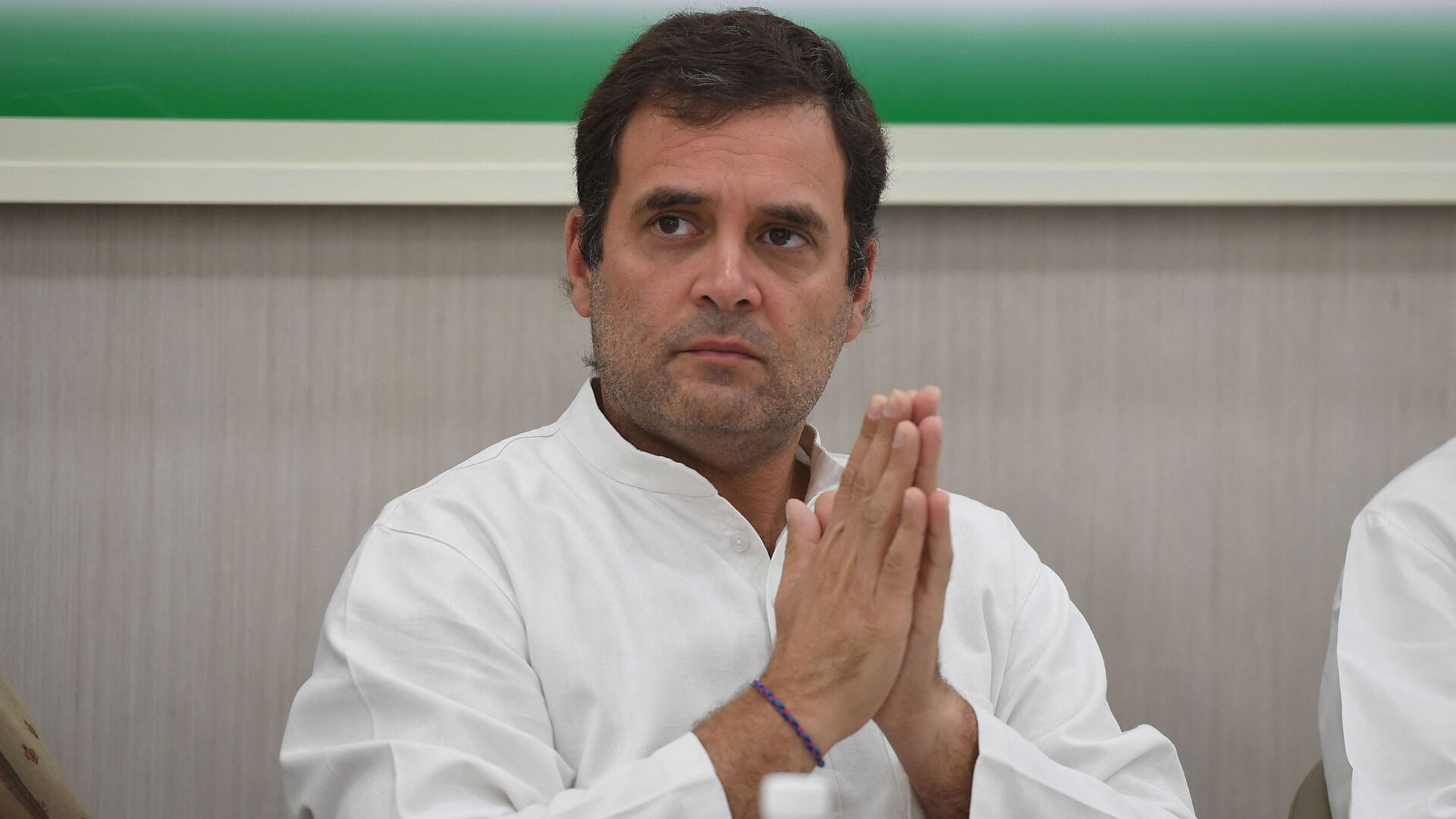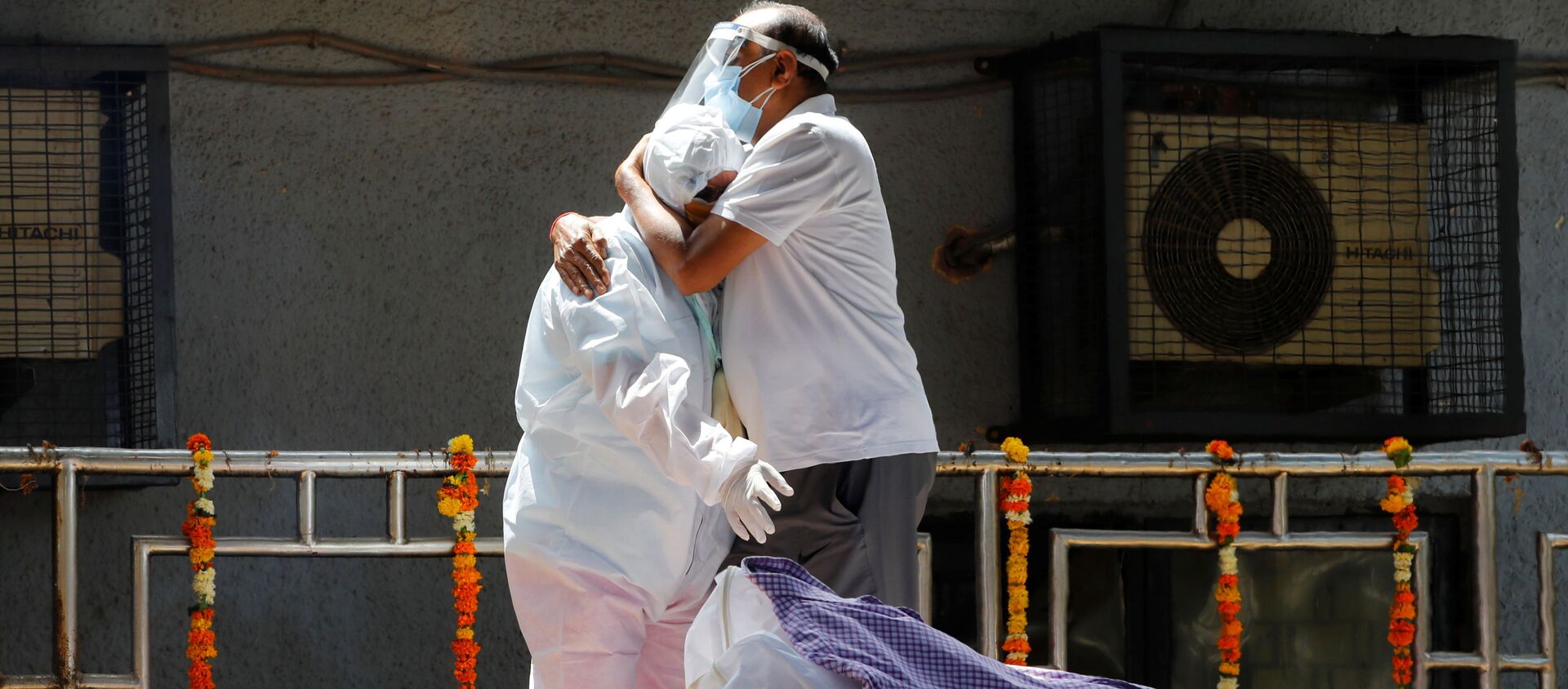Rahul Gandhi Says Rise of Imports From China to Blame for India's Worsening Unemployment
13:59 GMT 04.02.2022 (Updated: 11:21 GMT 05.03.2023)

© AFP 2023 / PRAKASH SINGH
Subscribe
Despite calls for a boycott of Chinese products in the wake of the deadly Ladakh border standoff and a set of policy measures aimed at reducing New Delhi's economic reliance on Beijing, the world's second-biggest economy saw exports to India rise to a record high of $100 billion in 2021.
Rahul Gandhi, the leader of India’s main opposition Congress party, has said that the South Asian nation’s ever-increasing reliance on imports from China is a major reason for growing joblessness among the population.
India, much like the US, is currently involved in an effort to decouple its economy from China's, despite Beijing consistently ranking among New Delhi's top two trading partners over the last decade or so.
A video shared by Gandhi on his social media handle on Friday underlined that India’s year-on-year imports from China had risen by 46 percent in 2021.
Imports from China reached the $100 billion-mark for the first time ever in 2021, according to data released by General Administration of Customs of the People’s Republic of China (GACC) this month.
JUMLA for India
— Rahul Gandhi (@RahulGandhi) February 4, 2022
JOBS for China!
Modi Government has destroyed the Unorganised Sector and MSMEs that create the most jobs.
Result: 'Make In India' is now 'Buy from China' pic.twitter.com/nZRUsYxgkP
The surge in Chinese imports last year was driven by electrical and electronic goods (smartphones, etc), fertilisers and speciality chemicals as well as active pharmaceutical ingredients (APIs).
The overall bilateral trade of $125 billion in 2021 was heavily skewed in favour of China, with the trade deficit witnessing a year-on-year increase from $45.9 billion in 2020 to $69.4 billion last year. In 2019, India’s trade deficit with China stood at nearly $56.8 billion, as per official data.
The video shared by Gandhi also drew a comparison between the levels of Chinese imports into India before and after 2014, when Prime Minister Narendra Modi first came to power.
The comparison shows that the average annual Chinese imports have been higher since 2014 than under the previous government, which was led by Gandhi’s Congress party.
“While Prime Minister Modi promised that he would lend a push to ‘Make in India’, what’s really been happening for the last seven years is that we are buying from China,” stated Gandhi.
The opposition leader noted that the country’s unemployment llevel, at the same time, was the “worst in over five decades”.
A leaked report from India’s National Sample Survey Office (NSSO) showed that the country’s unemployment rate in 2017-18 was at 6.1 percent, its highest since 1972.
As of January 2022, India's unemployment rate was standing at 6.57 percent, the lowest since March 2021, as the country gradually recovers with an easing of restrictions following a decline in Omicron cases, according to CMIE. The January number, however, it still higher than what it was before 2014.
Another study conducted by India’s Azim Premji University, released last year, showed that nearly 100 million formal sector jobs were lost during the COVID-induced lockdown in 2020, putting further strain on a bleak unemployment situation.
A government survey released in September last year showed that unemployment in urban areas rose to 20.9 percent during the April-June 2020 quarter. In 2020, India also entered its first-ever technical recession on account of the hit suffered by the economy due to COVID-induced lockdowns.
The NSSO survey was conducted in the wake of Prime Minister Narendra Modi’s sudden decision in November 2016 to demonetise the 500 INR ($7 approx.) and 1,000 INR ($14 approx.) banknotes from circulation.
The Congress party called the move a “blunder”, and said that it had broken the backbone of India’s informal economy.
Nearly 81 percent of India’s working age population was employed in the informal sector in 2018, as per the International Labour Organisation (ILO). The sector is heavily cash-reliant and comprises workers in small and medium-scale industries as well as agricultural labourers.
“Prime Minister Modi doesn’t understand that in order to create manufacturing jobs in the country, the government must support micro, small and medium enterprises (MSMEs). These industries have been the strength of our economy. But his government has been doing the exact opposite,” Gandhi stated during a speech in the Parliament on 2 February. Snippets from the speech were part of the video.
“The government has been taking the money away from these industries and distributing it among a few rich industrialists,” stated Gandhi, as he pointed to worsening inequality metrics in India.
According to government estimates, the MSME sector is the second-biggest employer in India after agriculture, and it contributes around 28 percent of the overall Gross Domestic Product (GDP).



